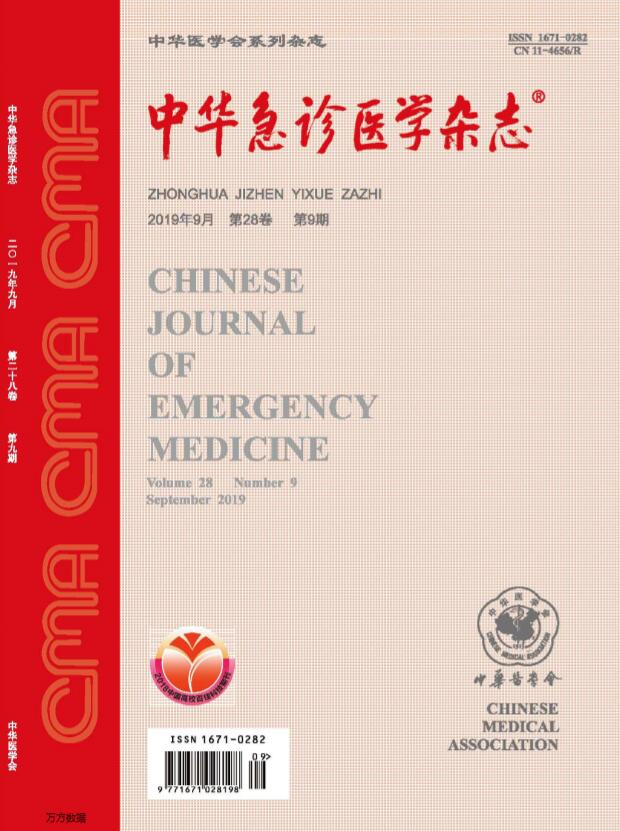CT检查判定规则在颅脑损伤儿童中的适用性
Q4 Nursing
引用次数: 0
摘要
目的探讨三种常用CT检查决策规则在中国颅脑损伤儿童中的适用性。方法采用前瞻性观察性研究方法,对山西医科大学第一医院急诊科收治的1 538名18岁以下儿童和青少年进行调查。三个临床决策规则包括:儿童头部损伤重要临床事件预测算法(CHALICE;英国);由儿科急诊应用研究网络(PECARN;美国)开发的用于识别临床重要创伤性脑损伤风险非常低的儿童的预测规则,以及加拿大儿童头部损伤断层扫描评估(CATCH)规则。通过使用特定规则的预测变量来预测符合每个规则的纳入和排除标准的人群中的每个特定规则的结果测量,来评估诊断准确性。敏感性、特异性、阴性预测值(NPV)、阳性预测值(PPV)和ROC曲线是指诊断准确性。结果在1538例患者中,339例(22.04%)获得了CT。49例(3.19%)患者的CT结果呈阳性,8例(0.52%)患者接受了神经外科手术,2例(0.13%)患者死亡,1例(0.07%)可能遗漏。在这项研究中,CHALICE应用于1 394名儿童(90.70%;95%可信区间:89.24%-92.15%),PECARN应用于801名儿童(52.11%;95%置信区间:49.62%-54.61%),CATCH应用于325名患者(21.15%;95%信息:19.10%-23.19%)。CHALICE、PECARN和CATCH规则的验证敏感性分别为92.6%(74.2%-98.7%)、100%(56.1%-100%)和85.7%(42.0%-99.2%);特异性分别为78.1%(75.7%-80.2%)、48.0%(44.5%-51.5%)和70.8%(65.4%-75.6%);阳性预测值分别为7.7%(5.1%-11.3%)、0.9%(0.4%-1.9%)和6.1%(2.5%-13.2%);阴性预测值分别为99.8%(99.2%-100%)、99.1%(98.1%-99.6%)和99.6%(97.2%~100%)。结论CHALICE、PECARN和CATCH的临床决策规则具有较高的敏感性。PECARN规则的特异性低于CHALICE和CATCH规则。以上三条临床决策规则可用于中国儿童颅脑损伤CT检查的决策。关键词:儿童;头部创伤;CT检查;临床决策规则;适用性;捕获;PECARN;圣杯本文章由计算机程序翻译,如有差异,请以英文原文为准。
Applicability of CT examination decision rules in head injured children
Objective
To explore the applicability of the three commonly used CT examination decision rules in Chinese head injured children.
Methods
This prospective observational study included 1 538 children and adolescents (aged <18 years), who were treated at the Emergency Department of First Hospital of Shanxi Medical University after head injuries. The three clinical decision rules include the Children’s Head Injury Algorithm for the Prediction of Important Clinical Events (CHALICE; UK); the prediction rule for the identification of children at very low risk of clinically important traumatic brain injury, that was developed by the Pediatric Emergency Care Applied Research Network (PECARN; USA), and the Canadian Assessment of Tomography for Childhood Head Injury (CATCH) rule. Diagnostic accuracy had been evaluated by using the rule-specific predictor variables to predict each rule-specific outcome measure in populations who met inclusion and exclusion criteria for each rule. Sensitivity, specificity, negative predictive value (NPV), positive predictive value (PPV), and ROC curve were referred to the diagnostic accuracy. Indicators were characterized by 95% CI.
Results
Of the 1 538 patients, CTs were obtained for 339 patients (22.04%). Forty-nine patients (3.19%) had positive CT results, 8 patients (0.52%) underwent neurosurgery, 2 patients (0.13%) died, and 1 patient (0.07%) may be missed. In this study, CHALICE was applied for 1 394 children (90.70%; 95% CI: 89.24%-92.15%), PECARN for 801 children (52.11%; 95% CI: 49.62%-54.61%), and CATCH for 325 patients (21.15%; 95% CI: 19.10%-23.19%). The validation sensitivities of CHALICE, PECARN, and CATCH rules were 92.6% (74.2%-98.7%), 100% (56.1%-100%), and 85.7% (42.0%-99.2%), respectively; the specificities were 78.1% (75.7%-80.2%), 48.0% (44.5%-51.5%) and 70.8% (65.4%-75.6%); positive predictive value were 7.7% (5.1%-11.3%), 0.9% (0.4%-1.9%) and 6.1% (2.5%-13.2%); and negative predictive value were 99.8% (99.2%-100%), 99.1% (98.1%-99.6%), and 99.6% (97.2%-100%), respectively.
Conclusions
The clinical decision rules of CHALICE, PECARN and CATCH have high sensitivities. The specificity of PECARN rule is lower than those of CHALICE and CATCH rules. The above three clinical decision rules can be used for the decision of CT examination in Chinese children with head injury in practice.
Key words:
Children; Head trauma; CT examination; Clinical decision rules; Applicability; CATCH; PECARN; CHALICE
求助全文
通过发布文献求助,成功后即可免费获取论文全文。
去求助
来源期刊

中华急诊医学杂志
Nursing-Emergency Nursing
CiteScore
0.10
自引率
0.00%
发文量
8629
期刊介绍:
Chinese Journal of Emergency Medicine is the only national journal which represents the development of emergency medicine in China. The journal is supervised by China Association of Science and Technology, sponsored by Chinese Medical Association, and co-sponsored by Zhejiang University. The journal publishes original research articles dealing with all aspects of clinical practice and research in emergency medicine. The columns include Pre-Hospital Rescue, Emergency Care, Trauma, Resuscitation, Poisoning, Disaster Medicine, Continuing Education, etc. It has a wide coverage in China, and builds up communication with Hong Kong, Macao, Taiwan and international emergency medicine circles.
 求助内容:
求助内容: 应助结果提醒方式:
应助结果提醒方式:


